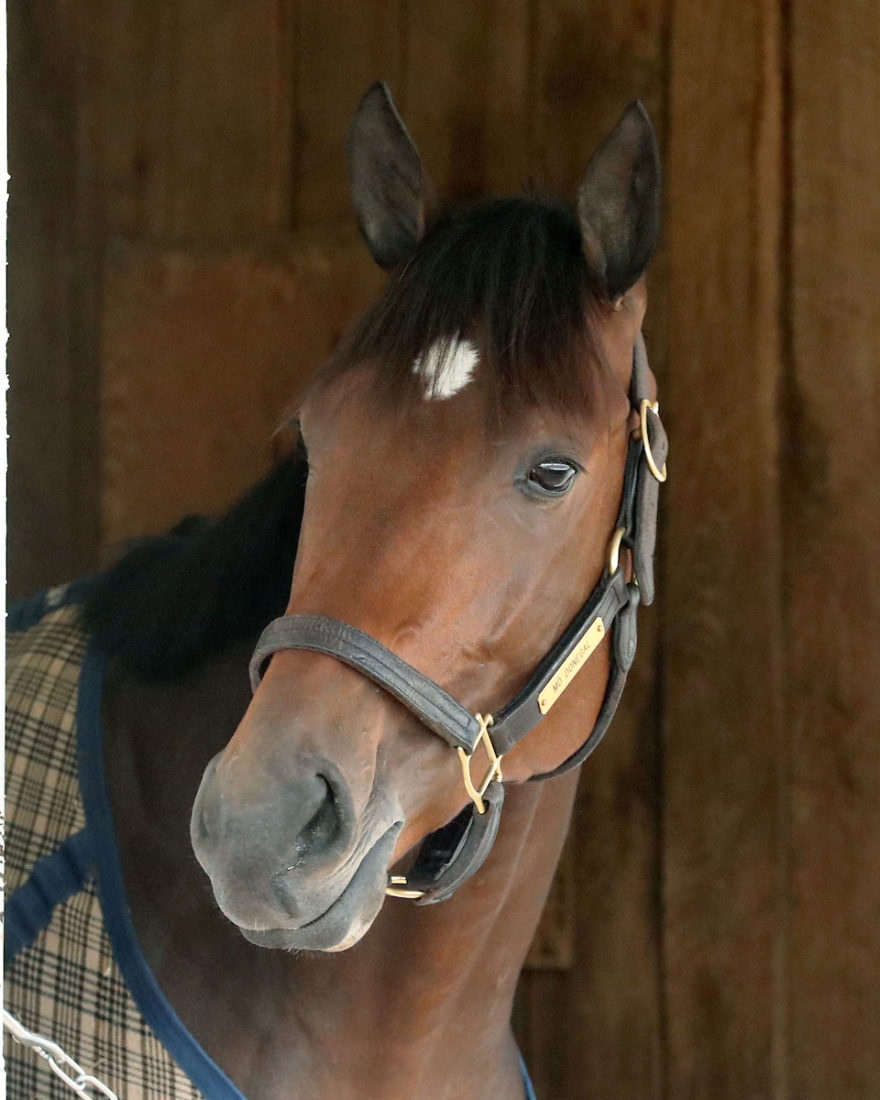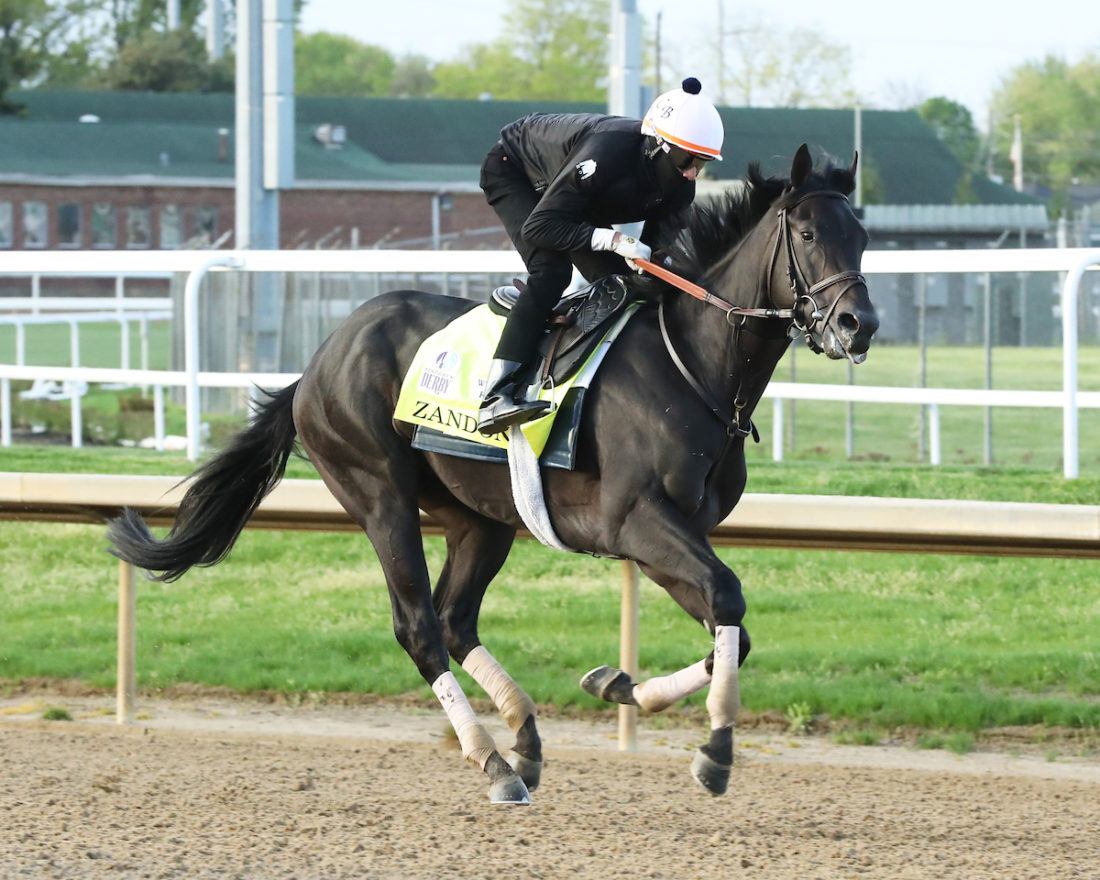Fair bonnets and the fair sting of a day spent downing juleps aside, the Kentucky Derby is not just the South’s rite of spring, with the gleaming $3 million purse and the blanket of roses waiting in the winner’s circle. Its larger role is that of a ferocious gauntlet, the national and international debut of the next generation of the best flat racers in the world.
Putting a horse race together may seem simple and perhaps was easier in 1875, when the stewards of Churchill Downs staged the first Kentucky Derby more or less on a round of handshakes for a purse totaling a thousand dollars. But in the ensuing century and a half, the process of finding and selecting the best athletes for the event has grown to become a months-long odyssey of prep races. Bluntly put, those races create the platform upon which all handicapping of the race is based.
How the Prep Races Work
If you’re the sort of racegoer who goes to the track to toss lucre into the air, by all means make it rain, baby, and more power to you. But if you want to win on Derby day, you’ve no choice but to do some judicious digging into the preps.
Beginning last September with the Iroquois Stakes at Churchill Downs and running until April 16 at tracks in the United States, Europe and Asia, this year’s forty-eight Kentucky Derby prep races formed the rite of passage for the three-year-olds of the Class of 2022. Just the four top finishers in each prep earn points toward a Derby invitation. Of the hundreds of horses in those races, only those with the top twenty point totals have earned Derby invitations. Why twenty? That’s the maximum number of runners that Churchill Downs’s starting gate holds. In the case horses are scratched or their owners and trainers have other plans, the horses below that cutoff move up.
All Derby preps are not created equal. Generally, the closer to the Derby the races are run, the higher the number of points available to those finishing well. In what are called the “win-and-you’re-in” bigger-stakes preps, the winner earns a hundred points toward a Derby invitation, the place horse books forty, the show horse charts twenty, and the fourth runner gets ten.
The Horses to Watch
The top points earner this year, with 164, is the impressive and aptly named Kentucky-bred colt Epicenter, who, after snagging his hundred points with a commanding win in the Louisiana Derby in March, was shipped by his trainer, Steve Asmussen, to Churchill Downs to bear down on some April workouts for the Derby. Epicenter and his formidable trainer—the United States’s winningest trainer at the moment, though he’s never clocked a Derby win—are this year’s team to beat.

Epicenter provides a solid case study for aspiring handicappers. The data from his workouts is available, as is some video, but what you’ll especially want to parse are his last two stakes performances, at the Louisiana Derby and the Risen Star Stakes, both run at New Orleans’ Fair Grounds.
In the Risen Star, Epicenter raced against Zandon, who, it so happens, is the second-highest contender on the Derby ladder, with 114 points, and who’s shaping up to be Epicenter’s chief rival. That doesn’t mean the Derby’s 148th running will be a match race between those two, but they have faced each other before on the field of battle, and Epicenter came out on top. Zandon finished a disappointing third.

However: Nothing about the Derby is ever set in stone until they’ve all crossed the finish line. In April, Zandon bounced back from the Risen Star to win Keeneland’s Blue Grass Stakes, snapping up his hundred points and ensuring his invitation to the big show. Pay close attention to the fractions and running styles of these two horses. Epicenter seems to like being in front but he’s resilient about it, meaning, it doesn’t crush his spirit if he’s got to lay back and then bring a run.
Similarly, Zandon seems to have the beginnings of that prized Derby commodity, tactical speed, which is to say, he’s shown (however briefly) an ability to find his spot and then gun it. That matters in the Derby because a twenty-horse field is, by definition, choked with thunderous traffic that can swiftly box contenders in, forcing them to do a bit of snaking through.
The Baffert Effect
Also at work among the top tier of Derby contenders this year is what we’ll call the “Baffert Effect,” so named for the California trainer Bob Baffert, whose 2021 athlete Medina Spirit tested positive on race day for trace amounts of the banned corticosteroid betamethasone and therefore had his Derby win reversed by the Churchill stewards. While betamethasone is a legitimate veterinary pharmaceutical and is in fact legal in Kentucky, it isn’t legal on race day. Baffert would have known that. Amid the enormous ethical and forensic debate the scandal caused within the sport, Churchill banned Baffert, one of just two trainers in history to have won six Derbies, from having his mounts race through 2023.
His Churchill banning didn’t require Baffert to shutter his barns—he’s got an ongoing, nationwide operation. Many owners kept their horses in Baffert’s hands until the Kentucky Horse Racing Commission laid an additional ninety-day ban atop Churchill’s that effectively prevents the trainer from racing anywhere in the United States for this Triple Crown season. That ban began on April 4. And so Baffert began passing his horses with upcoming races to other trainers.
Among the horses moving into other barns was Taiba, a promising Derby contender whom Baffert parceled out to trainer Tim Yakteen. Taiba has only raced twice in his life, but one of those starts was a win in the Santa Anita Derby, which is to say, Taiba pretty much leapfrogged the bottom half of the class and is rolling into the Derby with an impressive one hundred points. His performance in the Santa Anita was masterful, biding his time, overtaking his stablemate and Derby hopeful Messier in the last two furlongs with a fine run. Taiba’s question is whether he can show us that sort of cool-headed command again.
The Post Position Drama
The draw for the competitors’ post positions this Monday ahead of the Saturday race resulted in a few surprises for the favorites, including a fun shuffle in which Churchill’s veteran oddsmaker, the esteemed Mike Battaglia—who has made the morning line odds for the last forty-eight Kentucky Derbies—picked Zandon as the top favorite, with odds of 3 to 1. Zandon drew post position ten, right in the middle of the gate, a stall with which his owners, trainer, and jockey were delighted. Hard on his heels with odds of 7 to 2 was the race’s second favorite in the morning line, Epicenter, who drew what horsemen call the “three hole,” a stall with seventeen horses to the outside. Generally, the rule in the Derby has been that the positions closer to the rail are less favorable than those to the outside, a function of the size of the field crashing in toward the rail to save ground into the first turn. The third favorite, at 8 to 1, was Messier, who drew the six hole. The horse on the rail this year is the very strong Mo Donegal, who nevertheless is Battaglia’s fourth favorite, at 10 to 1. Rounding out the top five, Taiba drew the twelve stall, with 12 to 1 morning line odds.

A Few Final Hot Tips
For more of the inside scoop, once again we’ve roped in the Bluegrass Wise Man™—a Kentucky-born-and-bred horseman who prefers to preserve his trackside anonymity—to help us parse the ferocious, two-minute, three-dimensional chess game that is the Kentucky Derby:
Give us the horseman’s breakdown on what the point system accomplishes.
At bottom, it’s a sum of past performances. The bigger prep races are worth a hundred points because they’ve produced the most Derby winners historically. These days, more Derby winners seem to come from Santa Anita, the Florida Derby, and the Arkansas Derby than from the Wood. You want horses to be in form heading into the Derby, so the points system helps defend the race from being jumped by those who’ve not run well in the preps.
Speaking of Santa Anita, weigh in on Taiba for us. Fine colt, but just two races?
If you’re going into the Derby as light as he is, which only a handful have done, it’s good that one of those races was his win at Santa Anita. Taiba may just be the real deal. Inexperience and lack of starts may not matter as much as it once did. His sire is the brilliant Gun Runner. Still, the Santa Anita was just a six-horse field, and he did not go up against a ton of talent. Does he get a bounce off that? He’ll face serious talent in the Derby, but he’s a colt that has speed, can put himself in the race, take a breather, not worry about traffic, and then make his run.
Let’s move to Epicenter and Zandon.
Zandon and Epicenter got paired at the top of the favored colts this year, I’ll give ’em that. Both are good, both have shown some tactical speed, both have solid trainers, all that. Epicenter beat Zandon down in Louisiana, but Zandon came back to win the Blue Grass. Now, the Blue Grass hasn’t produced a Derby winner in a while, and the job is to look at what sort of competition the horse has faced in what sorts of situations on the track. Zandon himself was beaten last fall by Mo Donegal, who’s rated near the top. Mo Donegal is going to be a factor in the race, but he’ll have to step up a notch to win it. The debate around Epicenter and Zandon means that both of them have talents, and questions, that could take it either way. The race will take its toll, meaning, one of them may not be able to deal with the Derby pressure as well as the other, but we don’t know that yet.
Which brings us to the madness factor, a feature of the Derby every year. What do the horses make of this day?
We’re good at pageantry down in Kentucky, doncha know? The madness is real. You can school these colts all you want but they’ve never seen and will never see again 140,000 fans, or a jammed-up paddock like Churchill’s, or the insane walk to the track through the crowd. So many times this race has been lost at the start. You want your horse to have all four legs underneath him leaving the gate. If they balk or freak out or flop around in the gate, that’s your race right there.
At the break, the size of the field makes it likely that the colt will be bumped from either or both sides. So who can bounce out of that crush and go forward? The start can be more important than the run around the first turn, and that run around the first turn can get mighty tight. Then comes the war. If there’s too much speed, some of ’em won’t have the maturity to settle in and they’ll run outta gas. Mile-and-a-quarter, right? A lot of ’em may like that distance, but none of them have raced for that distance at this point in their lives. So, a million ways to screw up.
Watch the race for yourself on NBC this Saturday, May 7—coverage begins at 2:30 p.m. Eastern, with the race set for a few minutes before 7:00 p.m.








